Blog
Blog

A Beginner's Guide To Get More Customers with Local SEO

Is Your Business in Need of a Local SEO Campaign?
First and foremost, not all companies require local SEO. Only those that operate in a specific geographic region (or many) need to rank for the most critical keywords potential customers are searching for locally.
When ranking a website, Google considers a variety of local search ranking signals.
Local SEO Is Important for These Kinds of Businesses
Bars and restaurants are excellent places to get information about local attractions.
Misdemeanor lawyers, for instance, are a commonly known legal practice.
Local construction firms.
And, of course, there are gardeners and landscapers. But who are these people? Are they plumbers?
Real estate companies are a great example of this.
Treatment professionals that provide medical services.
Outside stores and boutiques.
Hairdressers.
The military, the police, and other government organizations can receive this tracking.
Local nonprofit organizations.
Coffee shops.
There are also specific fees that you must pay when hiring a renovation company.
As an independent business, a manufacturer has the flexibility to decide how it will be represented.
Most of the time, they focus on local marketing and customer support.
In addition, they can collect valuable data on visitors to their website.
Dealerships that specialize in selling automobiles.
We’re talking about current events. I’m referring to the world of photography here.
The meanings of “university” and “colleges and universities” have varied.
If your site is free, you may be able to get mentioned in it. Casino owners will often provide this service completely free.
For your company to be found, it needs a website!
The Advantages of Local SEO:
There are several undeniable advantages to having a local SEO strategy. Most individuals consider the first advantage as more visitors, but numerous additional benefits may help your company’s development.
The advantages of local SEO include the following:
Organic traffic increase should be your goal.
This involves generating highly relevant content to your clients’ needs and interests.
Ad expenses are lower.
Higher reputation.
Increase in brand recognition and trust.
Backlinks from local websites are more credible.
You have increased the visibility of your Facebook posts and status updates.
Improves the user experience on your website.
How to Develop a Local SEO Strategy?
After determining that your website needs local SEO, you must create a plan for increasing its local rankings and visitors.
To design a winning local SEO strategy, follow these ten steps.
1. Take a look at the services you have to offer.
Determine which terms you’d want your business to rank for. This will be based on the services and products you provide. If you’re looking for a local digital marketing business, chances are that it offers “social media marketing,” “Facebook advertising,” “paid advertising,” and the like. Alternatively, if you own a restaurant, you may categorize your “services” as “Mexican food,” “restaurant,” “taco shop,” and so on.
Make a list of the most relevant terms to your business and that your customers would search for. Determine some critical terms that customers might use to discover a company like yours by taking stock of what you have to offer. To get started, list these phrases as a starting point for your keyword research. After that, you will use local SEO tools to search for these phrases and uncover geo-specific keywords. You’ll also evaluate search volume and choose which keywords to focus on your website.
2. Examine Your Current Website
Before optimizing your site, figure out what’s wrong and whether it has a solid foundation.
An SEO audit can help you detect any technical or on-page SEO issues preventing your website from performing well. These concerns should be addressed before you focus on generating new SEO content, creating backlinks, and so on. SimilarWeb, for example, provides a large number of SEO tools that you may use to create an assessment of all your site’s problems.
Alternatively, you might opt to engage an SEO specialist to thoroughly examine your site and provide a list of items that must be addressed.
There are various SEO problems to be aware of, as follows:
Slow loading time.
Page titles are missing.
Why? Because your meta descriptions may have been altered.
We’ve discovered that some in-context links on the website do not work.
A poor indexation may exist.
Poor mobile site optimization.
3. Perform Competitor Keyword Research
One of the objectives of local SEO is to not only rank in local search but also to outrank your local rivals. To do this, you must first know what keywords they are ranking for. You should perform a competitive analysis with SEO tools like SimilarWeb or Serpstat to see which phrases your competitors rank for, where their backlinks come from, and more. You may also discover what keywords your website is currently ranking for.
Perform a search for a competitor’s domain on your preferred SEO tool, and it will provide you with a list of keywords that they are ranking for organically. You can also look at search traffic and competitiveness statistics to see whether these keywords are a good fit for your site. Remember that you should only target terms relevant to the services or items you offer, as a whole, what your company is about, and what potential customers may be looking for.
You want to drive organic traffic to your website that is tailored to the region where it’s located.
4. Find Geographically Specific Keywords
Let’s use a previous example to illustrate how this might work.
By combining these two lists, you can use SEO tools to examine search volume and competitiveness. Geo-specific keywords may be found by adding your location to the terms you’re searching for. For example, a search for “Mexican food Seattle” on SimilarWeb returned a long list of keyword variations, including:
[The best Mexican food in Seattle]
[mexican food in west seattle]
[where can I get good, cheap Mexican food in Seattle]
After that, we may look for [seattle Mexican restaurant] to see what other keyword variations appear.
5. Optimize Your Website’s On-page SEO
On-page SEO is the process of improving your website for the relevant local keywords you discovered in steps 2 through 4. In this lesson, you’ll go through how to apply SEO best practices on the website itself. You’ll also learn to follow on-page SEO standards to optimize your site for local search.
This on-page SEO procedure includes the following steps:
Keyword Mapping: This is where you connect the target keywords on your website to the individual pages. Each page should ideally have a relevant target keyword, which reflects what the page is about.
Creation of Content: Create informative, keyword-optimized content that explains your firm’s activities and the services/products it provides. Make sure you write with your target audience in mind while still including your targeted keywords.
Internal linking allows you to connect various pages on your website. These will make it easier for visitors to find the information they’re seeking and access your key pages.
6. Create localized landing pages
Local landing pages are web pages explicitly designed for organic local search rankings. These sites should be optimized with geo-specific keywords and include useful material to attract your target audience.
Creating landing pages optimized for mobile search, with H1, H2, and H3 titles that have been carefully optimized for keywords, keyword-optimized body text that includes internal links, images, and optimization for mobile search is a good approach. You may use these landing pages for advertising other services or goods, and you can profit from them by using paid advertising.
7. Optimize Your Google My Business List
Google My Business is free of cost tool that allows any small business to increase organic traffic, receive client reviews, and more. It would be best if you had a fully optimized listing to improve your chances of ranking in search.
To start, go to your Local Business Center and sign up for a free account (if you don’t have one already). Then claim your business or create a new listing. You may then add your company address, phone number, website URL, photos, hours of operation, and more so that consumers may learn more about you. GMB is the most valuable local marketing service for a reason. Make the most of GMB by optimizing your listing to enhance your local SEO over time.
8. Fill out the information in the directory listings form
There are several alternative ways to get your business information into GMB, not just those provided by GMB. There are numerous online directories where you may submit your company information, including Yelp, YellowPages, Bing Places, and Better Business Bureau (BBB). Others include Google MyBusiness and Casemaker. The goal of this phase is to submit your information to reputable and (ideally) local directories to generate organic traffic, earn links, and boost your local SEO. All directories must use the same business name, address, phone number, and website URL (NAPW) as you did.
If you have the resources, check for industry-related directories to include your firm. At the same time, to acquire a link; not all directories are made equal.
9. Create a Local Connection Building Strategy
Understanding how Google interprets local link building and why it might not perform as well as international link building in certain instances is critical. Localized link building, however, may look somewhat distinct from global link building. The actual location of the sites linking to your site is also essential in this case. Use Google My Business to promote your business and reach out to local businesses in your area. Also, create region-specific content to elicit relevant anchor text from local SEO firms.
There are a few strategies to acquire backlinks:
We will generate awareness through employer branding, direct mail, and email newsletters.
Guest posting is a business practice that entails publishing written material on your blog without compensation.
You’ll be able to make assets for your content.
10. Create Positive Customer Reviews to Promote Your Business
The number of good reviews your website has on GMB is a significant ranking component for local SEO. After your collaboration, conducting client exit interviews is an excellent method to solicit client feedback. You may also contact customers and ask them to leave you a review on GMB, Yelp, Facebook, and other platforms.
Conclusion:
By following the steps above, you can make your local SEO efforts more successful and improve your chances of ranking higher on search engine results pages. Creating compelling content, optimizing your GMB listing, and building local links (link building) are all excellent ways to improve your local SEO. As always, keep your target audience in mind when devising a local SEO strategy to ensure that your efforts are aligned with their needs and preferences. And, if you need help getting started or don’t have the time to implement a local SEO campaign on your own, consider working with an experienced digital marketing agency.
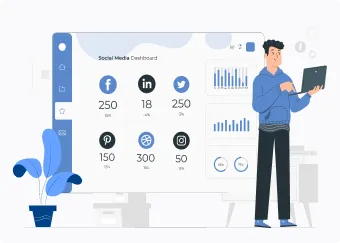
Social Media Marketing Problems to consider
Optimize your social media, content affiliate marketing strategy with these essential insights. Explore changes in social media, increasing customer skepticism, TikTok's influence, and the rising cost...
Read More

understanding the basics of affiliate marketing Programs
Selecting the ideal affiliate program is crucial for success. Consider products, commissions, and payment structures. Benefit from increased traffic, brand trust, global reach, and multiple sales stra...
Read More
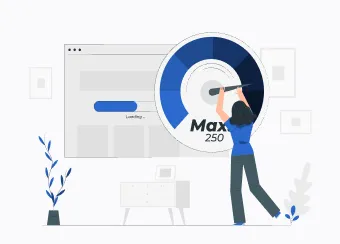
Optimize Website Health & Speed for better Experience
Boost your website's SEO with our comprehensive guide on optimizing health and load speed. Enhance user experience, improve search visibility, and monitor performance for higher rankings....
Read More
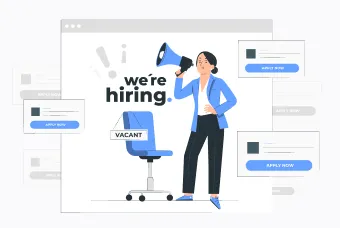
the Truth about affiliate marketing and hiring
Explore the Benefits of Affiliate Marketing: Learn how it can grow your brand, boost revenue, and reach your audience effectively. Find out how an affiliate marketing agency can help you succeed, and...
Read More
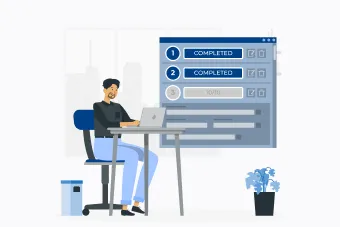
4 steps to set up your own affiliate program (Beginners)
Launch a powerful affiliate program with these 8 steps for success. Define your goals, set rules, and attract affiliates through strategic marketing. Choose partners that align with your brand and wat...
Read More

A beginners guide to attract more customers
Boost your website's SEO with our comprehensive guide on optimizing health and load speed. Enhance user experience, improve search visibility, and monitor performance for higher rankings....
Read More
Join Our Newsletter
Get awesome tips and the latest in Digital Marketing! No Spam Ever
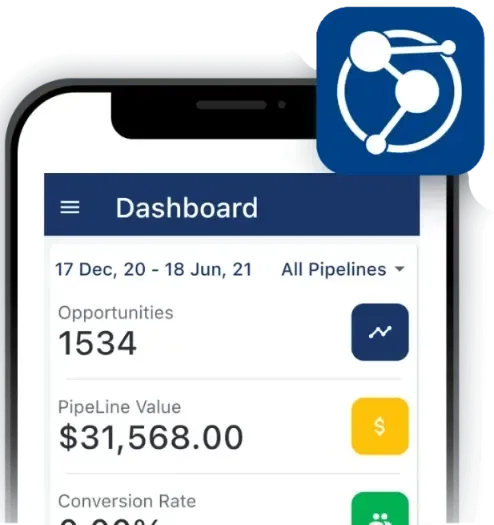
Bring NationwideLeads on the go with our Lead Connector App
Receive all of your inbound calls with our iOS & Playstore Mobile App. Assign specific phone numbers to staff members and track calls. Text on the go to all your lead inquiries. The time-saving opportunities are endless.
Email, Video SMS, Calls, etc
Drop Ringless Voicemails
Track All Leads & Calls
Custom Business Number
2024 | All Rights Reserved
2112 Broadway St NE, Ste 225 #280, Minneapolis, MN 55413
2112 Broadway St NE, Ste 225 #280,
Minneapolis, MN 55413






